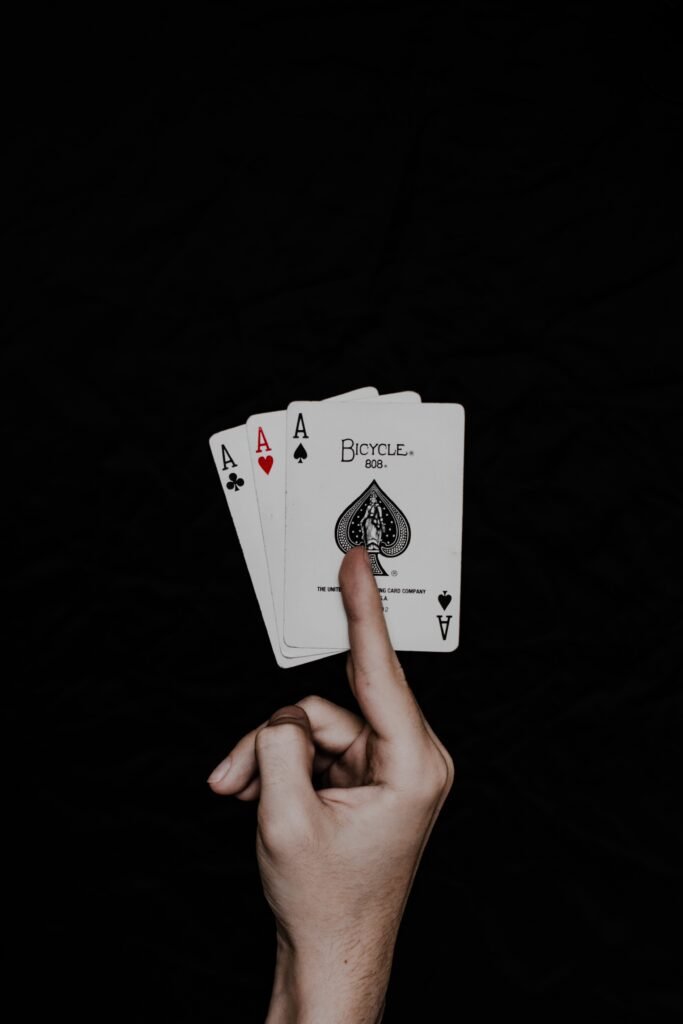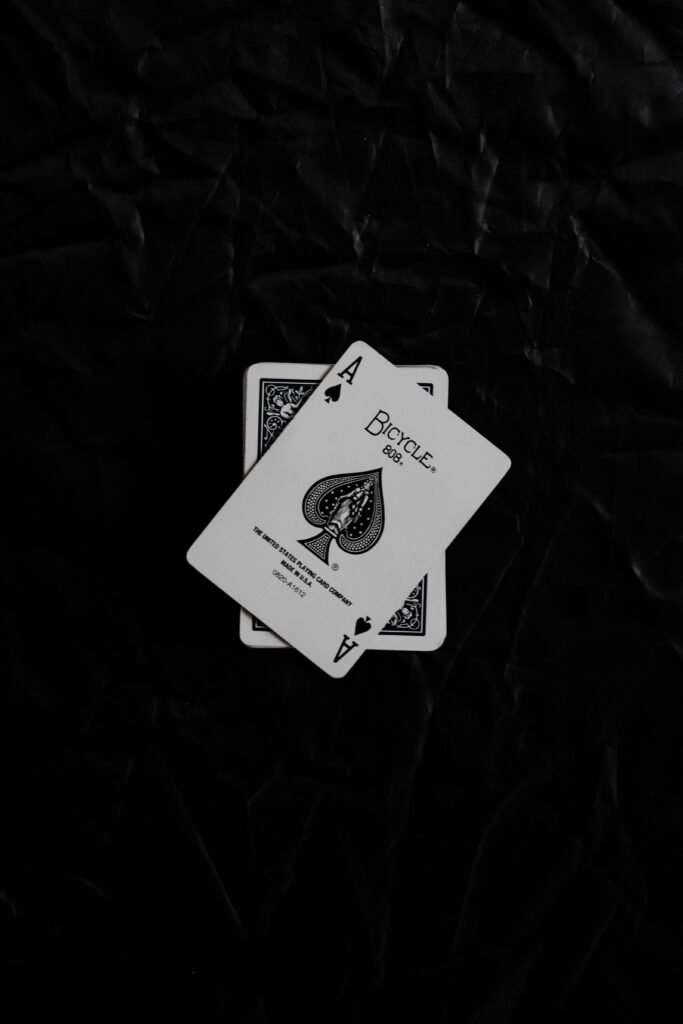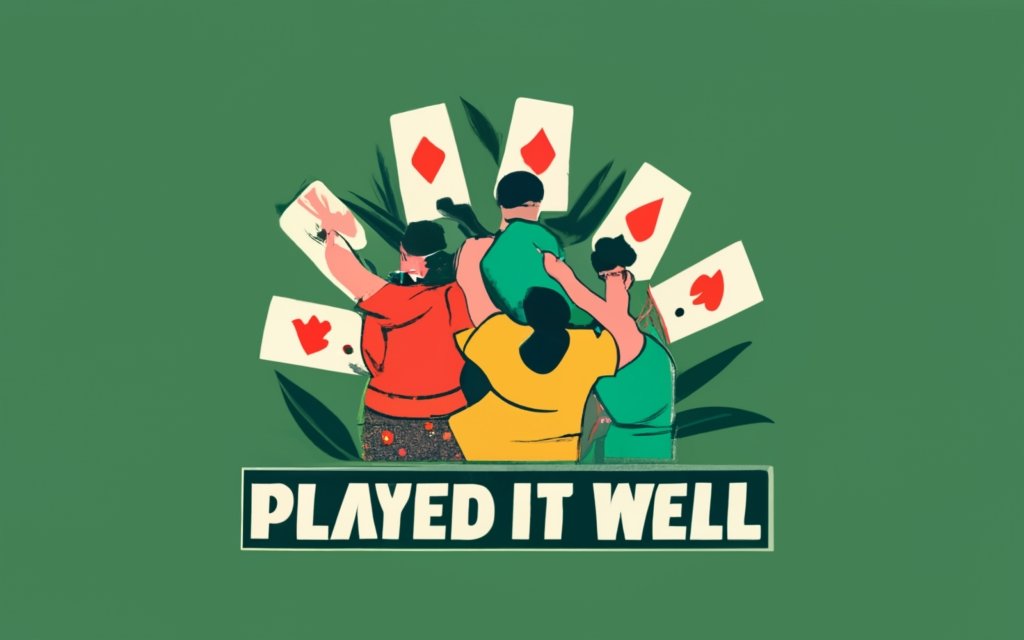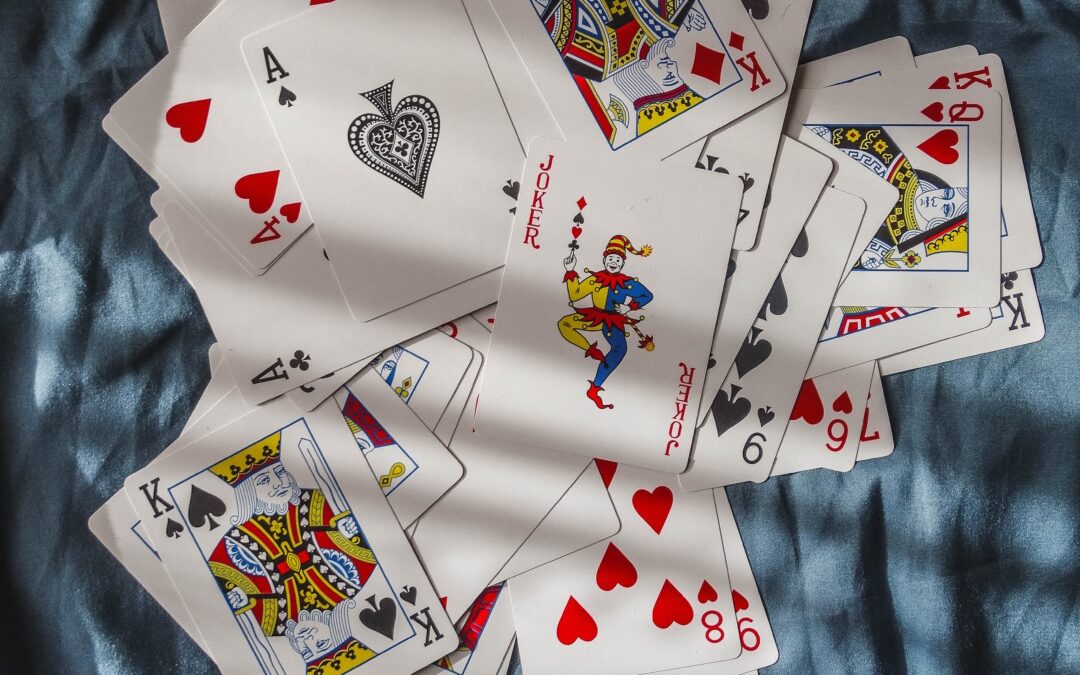So you’re wondering just how many club cards are in a deck, huh? Well, let’s clear up that mystery for you. In a typical deck of playing cards, there are four suits – hearts, diamonds, spades, and clubs. Each suit consists of thirteen cards, and that includes the clubs. So, the answer you’re looking for is that there are thirteen club cards in a deck. Sounds simple, doesn’t it? But let’s explore this topic a bit more and uncover some interesting facts about these club cards.

This image is property of images.unsplash.com.
History of Playing Cards
Origin of playing cards
The exact origin of playing cards is still debated among historians, but it is widely believed that they originated in China during the 9th century. These early cards were used for various purposes, including gambling, fortune-telling, and entertainment. They were initially hand-painted on silk or paper and featured various designs and symbols.
Introduction of standardized card decks
The concept of standardized card decks began to emerge in the 14th century when playing cards started to gain popularity in Europe. The major breakthrough was the development of woodblock printing, which allowed for the mass production of cards. This led to the standardization of card sizes and designs, making it easier for players to recognize and use different decks.
Inclusion of suits in card decks
As playing cards spread across Europe, different regions started to develop their own suits or symbols to represent different card types. The four traditional suits that have stood the test of time are hearts, diamonds, spades, and clubs. These suits were chosen for their aesthetic appeal and ease of recognition. The inclusion of suits added a new level of strategy and complexity to card games, as players had to consider not only the rank but also the suit of each card.
Evolution of club cards
The club suit, also known as clover or trefoil, is one of the four suits found in a standard deck of cards. The symbol of a club represents a stylized version of a three-leaf clover. Over the centuries, the design of club cards has evolved, reflecting changes in artistic styles and cultural influences. Today, club cards are an integral part of many card games and have also become popular among collectors and enthusiasts.
Structure of a Standard Deck
Number of cards in a standard deck
A standard deck of playing cards consists of 52 cards, divided into four suits of 13 cards each. These suits are hearts, diamonds, spades, and clubs. Each suit contains cards numbered from 2 to 10, along with three face cards – the King, Queen, and Jack. Additionally, there are two additional cards, known as Jokers, which are often included in decks for certain games and magic tricks.
Overview of card suits
The four suits found in a standard deck have their own distinct symbols and colors. Hearts are represented by a red heart shape, diamonds by a red diamond shape, spades by a black spear-like shape, and clubs by a black trefoil or clover shape. Each suit has its own unique characteristics and associations, adding depth and variety to the world of playing cards.
Understanding the club suit
The club suit is characterized by its distinct shape – a black trefoil or clover. This symbol is thought to have originated from the acorn shape used in earlier European playing cards. The club suit is associated with the element of Earth and is often associated with luck, growth, and abundance. In card games, the club suit often carries a specific rank and value, contributing to the overall strategy and gameplay.
The Club Suit
Appearance of club cards
Club cards, also known as clubs or clovers, feature the iconic trefoil shape associated with the club suit. The trefoil is usually colored black, contrasting with the red and black colors of the other suits. The shape is stylized and typically displayed in a symmetrical and visually appealing manner. The design of club cards can vary depending on the deck, with some featuring intricate patterns and embellishments, while others adopt a more minimalist and modern aesthetic.
Symbolism of the club suit
The club suit has symbolic connotations that have evolved over time. Traditionally, the club suit represents the symbol of a plant or growth, with the trefoil shape resembling the leaves of a clover or the branches of a tree. It is often associated with luck, fertility, and the natural world. In some card games and superstitions, the club suit may carry positive or negative meanings, adding an element of fascination and mystique to the cards.
Variations in club designs
Throughout history, numerous variations in the design of club cards have emerged. Different cultures, regions, and periods have influenced the artistic interpretation of the club suit, resulting in diverse and captivating designs. Some decks feature intricate and ornate club cards with detailed illustrations, while others opt for simpler and more modern designs. From classic motifs to contemporary adaptations, the club suit offers endless possibilities for creative expression.
Club Cards in a Deck
Total number of club cards
In a standard deck of playing cards, there are four club cards, each representing a different rank. These ranks are Ace, 2 through 10, and the three face cards – King, Queen, and Jack. Each rank is associated with a specific numeric or face value, determining its significance in gameplay. The presence of four club cards ensures that players have a balanced distribution of cards across all four suits.
Distribution of club cards by rank
In any given deck, the club cards are distributed evenly across the different ranks. This means that there is one club card for each rank from Ace to 10, as well as one club King, Queen, and Jack. The distribution ensures that each rank is equally represented in the deck, allowing players to strategize and make informed decisions based on the cards they hold.
Distribution of club cards by value
The value of club cards varies depending on the specific game being played. In most card games, club cards hold a value equal to their rank, with the Ace being the lowest and the King, Queen, and Jack having higher values. However, certain games might assign different values to club cards based on their rank or suit, adding an extra layer of complexity and strategy to gameplay.

This image is property of images.unsplash.com.
Purposes of Club Cards
Gameplay in specific card games
Club cards play a crucial role in various card games, contributing to the overall strategy and excitement. Different card games utilize the club suit in different ways, with some games requiring players to collect specific club cards for a winning hand, while others use club cards as trump cards. The presence of club cards ensures a dynamic and engaging gaming experience for players of all skill levels.
Card tricks and magic performances
Club cards, like other playing cards, are frequently used in card tricks and magic performances. The symbolic nature of the club suit adds an intriguing element to illusions and sleight of hand tricks. Magicians and card manipulators often incorporate club cards into their routines, using their distinctive design to captivate and entertain audiences.
Collectible and decorative purposes
In addition to their use in gameplay and magic, club cards have become popular collectibles and decorative items. Many enthusiasts and collectors are drawn to the beauty and historical significance of playing cards, including the club suit. Some individuals collect antique or rare club cards, while others seek out modern decks with unique designs. Furthermore, club cards can be used in a variety of art projects, framed displays, and home decor, adding a touch of elegance and sophistication to any space.
Notable Club Card Designs
Famous club card designs in history
Throughout history, many memorable club card designs have left an indelible mark on the world of playing cards. From the ornate and elaborate designs of the Renaissance era to the bold and minimalist styles of the modern age, various decks have captivated players and collectors alike. The classic Bicycle playing cards, for example, feature a distinctive and widely recognized club suit design that has become iconic in the world of playing cards.
Artistic interpretations and styles
Artistic interpretations of club cards have evolved alongside the broader developments in art and design. Over the centuries, club card designs have reflected the prevailing artistic trends, cultural influences, and personal styles of the designers. Some decks feature intricate and detailed illustrations, showcasing the skill and craftsmanship of the artists, while others adopt a more abstract or symbolic approach. The diversity of artistic styles ensures that there is a club card design to suit every taste and preference.
Influence of culture and regional preferences
The design of club cards is not only influenced by artistic trends but also by cultural preferences and regional traditions. Different countries and regions often have their own unique interpretations of the club suit, infusing it with local symbolism and meaning. For example, in some Asian cultures, the club suit is associated with bamboo, while in others, it may represent a different plant or symbol altogether. These cultural influences add depth and diversity to the world of playing cards, showcasing the rich tapestry of human creativity and imagination.

This image is property of images.unsplash.com.
Interesting Facts about Club Cards
Club cards in popular culture
Club cards have made their way into popular culture in various forms. From movies and TV shows to literature and art, the club suit has become a recognizable symbol that signifies luck, risk-taking, and even rebellion. In popular culture, club cards often appear in pivotal moments or as key plot elements, further cementing their status as iconic symbols of the gaming world.
Superstitions and beliefs surrounding club cards
Playing cards, including club cards, have a long history of being associated with superstitions and beliefs. In some cultures, the club suit is believed to bring good luck, while in others, it is considered unlucky. These beliefs often stem from centuries-old traditions and folklore, adding an air of mystery and intrigue to the world of playing cards. Some individuals may have personal superstitions related to specific club cards, further enhancing the emotional connection and fascination with this suit.
Record-breaking club card-related achievements
The world of club cards has seen its fair share of record-breaking achievements. From the largest playing card collection to the world’s largest card tower, enthusiasts and collectors have pushed the boundaries of what is possible with club cards. These record-breaking accomplishments not only showcase the passion and dedication of individuals but also highlight the enduring appeal and fascination with playing cards, including the beloved club suit.
Manufacturing and Printing
Production process of playing cards
The production process of playing cards involves various stages, from the initial design conception to the final packaging. Typically, the process begins with the creation of the card artwork, which is then translated into printing plates or digital files. The printing plates or files are used to print the cards onto large sheets of cardboard or paper. After the printing, the sheets are cut into individual cards, and additional processes such as varnishing, embossing, and foiling may be applied. Finally, the cards are sorted, collated, and packaged for distribution.
Printing methods and technologies
The printing of playing cards has evolved over time, with different methods and technologies being employed to achieve the desired results. Traditional methods such as letterpress and offset lithography have been used in the past, while modern printing techniques like digital printing and UV printing have gained popularity due to their flexibility and efficiency. The choice of printing method depends on factors such as the desired print quality, quantity, and budget.
Quality factors to consider in club cards
When it comes to club cards, quality is of utmost importance. Factors such as cardstock thickness, durability, finish, and print quality contribute to the overall feel and aesthetic of the cards. A well-crafted club card should have a good weight, be resistant to wear and tear, and showcase crisp and vibrant printing. Numerous companies specialize in producing high-quality playing cards, offering a range of options for both casual players and collectors seeking premium products.

Deck Variations
Specialty decks with extra club cards
While standard decks consist of four club cards, there are specialty decks available that feature extra club cards. These decks are often used for specific card games that require a larger number of club cards for gameplay. The inclusion of extra club cards adds a unique twist to traditional card games and allows for increased strategic possibilities.
Limited edition club card decks
Limited edition club card decks are highly sought after by collectors and enthusiasts. These decks are produced in limited quantities and often feature unique and intricate designs, premium materials, and special packaging. Limited edition club card decks offer a sense of exclusivity and are cherished by those who appreciate the art and craftsmanship that goes into creating these exceptional playing cards.
Customizable club card sets
For those seeking a more personalized touch, customizable club card sets are available. These sets allow individuals to create their own unique designs, incorporating personal photographs, artwork, or messages onto the cards. Customizable club card sets are ideal for special occasions, gifts, or promotional purposes, providing a one-of-a-kind playing experience.
Conclusion
Club cards have a rich history and a significant role in the world of playing cards. From their ancient origins to their modern-day use in games, magic tricks, and collectibles, club cards have captivated individuals across cultures and generations. The unique symbolism, diverse designs, and varied uses of club cards ensure that they remain an integral part of the playing card landscape. Whether you’re a casual player, a dedicated collector, or simply appreciate the beauty and fascination of playing cards, club cards offer endless opportunities for enjoyment and self-expression. So, the next time you hold a deck of cards in your hands, take a moment to appreciate the club suit and the legacy it represents in the world of gaming and beyond.

